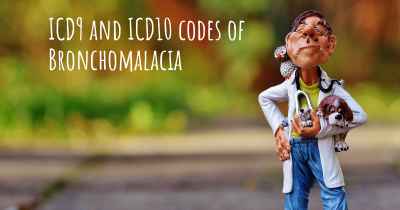Is it advisable to do exercise when affected by Bronchomalacia? Which activities would you suggest and how intense should they be?
See if it is advisable for people with Bronchomalacia to practice sports and which ones are the most recommended if you have Bronchomalacia

Is it advisable to do exercise when affected by Bronchomalacia?
Bronchomalacia is a condition characterized by the weakening of the walls of the bronchial tubes, which are responsible for carrying air to and from the lungs. This can lead to symptoms such as wheezing, shortness of breath, and coughing. When dealing with a respiratory condition like bronchomalacia, it is important to approach exercise with caution.
Benefits of Exercise for Bronchomalacia
While it is important to consult with a healthcare professional before starting any exercise regimen, there are potential benefits to incorporating exercise into your routine when affected by bronchomalacia:
- Improved lung function: Regular exercise can help improve lung capacity and strengthen the respiratory muscles, which may help alleviate some of the symptoms associated with bronchomalacia.
- Enhanced cardiovascular health: Engaging in cardiovascular exercises, such as walking, swimming, or cycling, can improve heart health and overall fitness levels.
- Weight management: Maintaining a healthy weight is crucial for managing bronchomalacia. Exercise can help with weight management by burning calories and increasing metabolism.
- Mental well-being: Exercise has been shown to have positive effects on mental health, reducing stress and anxiety levels, which can be beneficial for individuals dealing with a chronic condition like bronchomalacia.
Choosing the Right Activities
When selecting exercises, it is important to consider the impact they may have on your respiratory system. Here are some activities that are generally considered safe for individuals with bronchomalacia:
- Walking: Walking is a low-impact exercise that can be easily modified to suit your fitness level. Start with shorter distances and gradually increase the duration and intensity as tolerated.
- Swimming: Swimming is an excellent choice for individuals with bronchomalacia as it provides a full-body workout without putting excessive strain on the respiratory system. The water's buoyancy also helps support the body, making it easier to breathe.
- Cycling: Cycling is a low-impact exercise that can be done indoors on a stationary bike or outdoors. It allows for a customizable intensity level and can be adjusted based on your comfort and fitness level.
- Yoga: Yoga focuses on controlled breathing and gentle movements, making it a suitable option for individuals with bronchomalacia. It can help improve flexibility, reduce stress, and promote relaxation.
Exercise Intensity
The intensity of exercise should be tailored to your individual capabilities and limitations. It is important to listen to your body and not push yourself beyond your comfort level. Here are some general guidelines to consider:
- Start slow: Begin with low-intensity exercises and gradually increase the duration and intensity over time.
- Monitor your breathing: Pay attention to your breathing during exercise. If you experience excessive shortness of breath or wheezing, it may be a sign to reduce the intensity or take a break.
- Take breaks as needed: It is essential to listen to your body and take breaks when necessary. Pace yourself and allow for rest periods during your exercise sessions.
- Consult with a healthcare professional: Before starting any exercise program, it is crucial to consult with your healthcare provider. They can provide personalized recommendations based on your specific condition and overall health.
Conclusion
While exercise can have numerous benefits for individuals with bronchomalacia, it is important to approach it with caution and consult with a healthcare professional. Incorporating low-impact activities such as walking, swimming, cycling, or yoga can help improve lung function, cardiovascular health, and overall well-being. Remember to start slowly, monitor your breathing, and listen to your body's signals. By taking these precautions, you can safely incorporate exercise into your routine and potentially experience positive effects on your bronchomalacia symptoms.








